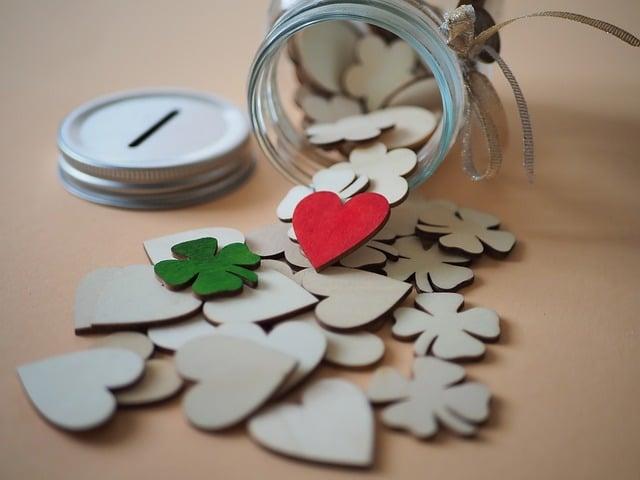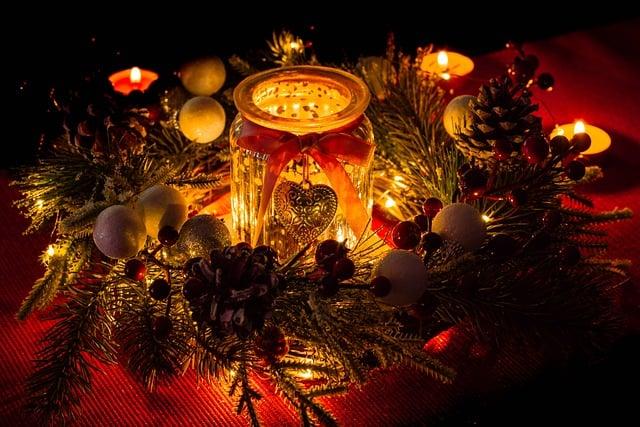In a quaint village, nestled between rolling hills, a humble church stood adorned with a vibrant wreath each Christmas. The villagers gathered, curious about its meaning. An elderly woman, known for her wisdom, explained that the circular shape of the wreath symbolizes eternity—God’s endless love. The evergreens represent life and hope, even in winter’s chill. As they listened, the villagers felt a warmth in their hearts, realizing that each wreath was not just decoration, but a reminder of faith, renewal, and the promise of everlasting life.
Table of Contents
- The Spiritual Significance of Wreaths in Christian Tradition
- Exploring the Symbolism of Eternal Life and Resurrection
- Wreaths as a Reflection of Faith and Community in Worship
- Crafting Your Own Wreath: A Personal Journey of Faith and Reflection
- Q&A

The Spiritual Significance of Wreaths in Christian Tradition
Wreaths hold a profound place in Christian tradition, symbolizing the eternal nature of God’s love and the cycle of life. Crafted in a circular form, they represent **wholeness** and **completeness**, echoing the belief that God is without beginning or end. This shape serves as a reminder of the everlasting life promised through Christ, inviting believers to reflect on the continuity of faith and the hope of resurrection. During the Advent season, wreaths adorned with candles illuminate the path to Christmas, each flame representing a different aspect of the journey toward the birth of Jesus, fostering a spirit of anticipation and reflection.
Moreover, the materials used in wreath-making often carry their own spiritual significance. **Evergreen branches**, for instance, symbolize **eternal life** and the promise of renewal, as they remain vibrant even in the coldest months. The use of **berries** and **pinecones** can signify the fruits of the Spirit and the abundance of God’s blessings. As families gather to create and display wreaths, they engage in a meaningful tradition that not only beautifies their homes but also deepens their connection to the faith, serving as a visual testament to the hope, love, and joy that Christianity embodies throughout the seasons of life.

Exploring the Symbolism of Eternal Life and Resurrection
The symbolism of eternal life and resurrection is intricately woven into the fabric of Christian beliefs, and wreaths serve as a poignant representation of these themes. Traditionally crafted from evergreen materials, wreaths embody the idea of life that persists beyond the seasons, reflecting the promise of renewal and the hope of everlasting existence. The circular shape of the wreath, with no beginning or end, further emphasizes the concept of eternity, inviting contemplation on the divine cycle of life, death, and rebirth. In this way, wreaths become a visual reminder of Christ’s resurrection, symbolizing the triumph over death and the assurance of life everlasting for believers.
Moreover, wreaths are often used in various Christian ceremonies and celebrations, reinforcing their significance in the spiritual journey. During Advent, for instance, the Advent wreath, adorned with candles, signifies the anticipation of Christ’s birth and the light He brings into the world. Each candle lit represents a step closer to the celebration of His arrival, echoing the themes of hope and renewal. In funerals, wreaths are frequently placed as tributes, symbolizing the deceased’s transition to eternal life and the belief in resurrection. Through these practices, wreaths become powerful symbols of faith, encapsulating the essence of life’s continuity and the promise of a future beyond the earthly realm.

Wreaths as a Reflection of Faith and Community in Worship
Wreaths hold a profound significance in Christian worship, serving as a tangible expression of faith and community. Traditionally crafted from evergreen branches, they symbolize the eternal nature of God’s love and the promise of everlasting life. The circular shape of the wreath represents the infinite nature of God, with no beginning or end, inviting worshippers to reflect on the continuity of faith through generations. During the Advent season, wreaths adorned with candles illuminate the path of hope and anticipation, each flame representing a week of preparation for the celebration of Christ’s birth. This ritual not only enhances the spiritual atmosphere but also fosters a sense of unity among congregants as they gather to share in the sacred moments of waiting and reflection.
Moreover, wreaths often serve as a focal point in communal worship, embodying the collective spirit of the church. They are frequently used in various liturgical celebrations, from Christmas to Easter, reinforcing the shared beliefs and traditions that bind the community together. The act of creating and displaying wreaths can also be a communal activity, where members come together to craft and decorate, strengthening their bonds through shared creativity and purpose. In this way, wreaths transcend mere decoration; they become a symbol of the church’s mission to cultivate love, hope, and fellowship among its members, reminding everyone of their interconnectedness in faith.

Crafting Your Own Wreath: A Personal Journey of Faith and Reflection
Wreaths hold a profound significance in Christianity, serving as a powerful symbol of faith and the cyclical nature of life. Traditionally, they are circular in shape, representing **eternity** and the unending love of God. This shape reminds us that God’s love has no beginning or end, echoing the promise of eternal life through Christ. As we craft our own wreaths, we can reflect on the **seasons of our faith**, recognizing how each twist and turn in our lives contributes to our spiritual journey. The materials we choose—whether evergreen branches, vibrant flowers, or humble twigs—can also symbolize the **diversity of creation**, reminding us of the beauty found in God’s handiwork all around us.
Moreover, wreaths are often adorned with various elements that carry their own meanings. For instance, **evergreens** symbolize hope and renewal, reflecting the promise of resurrection and new beginnings. **Candles** placed within the wreath can represent the light of Christ, illuminating our path through darkness. As we weave together these symbols, we create a personal narrative that intertwines our own experiences with the broader story of faith. Each wreath becomes a canvas for our reflections, a tangible reminder of the **grace and love** that surrounds us, inviting us to pause and contemplate our relationship with God and the world around us.
Q&A
-
What do wreaths represent in Christianity?
Wreaths in Christianity often symbolize eternal life and the unending love of God. Their circular shape represents the infinite nature of God’s love and the promise of eternal life through Christ.
-
Why are wreaths used during Advent?
The Advent wreath is a significant tradition that marks the four weeks leading up to Christmas. Each candle represents hope, peace, joy, and love, illuminating the path to the celebration of Christ’s birth.
-
What colors are typically used in Christian wreaths?
Christian wreaths often feature colors like green, which symbolizes life and renewal, and purple or blue, representing penitence and preparation during Advent. The use of white may also signify purity and the celebration of Christ’s birth.
-
Can wreaths be used for other Christian celebrations?
Yes, wreaths can be used for various Christian celebrations, including Easter, where they symbolize resurrection and new life. They can also be found in other liturgical seasons, reflecting the themes of the church calendar.
In the gentle embrace of a wreath, we find a tapestry of Christian symbolism—eternal life, hope, and the cyclical nature of faith. As we hang these circular emblems, may we reflect on their deeper meanings and the love they represent in our spiritual journey.

大家好,我是彼得潘,專業的手法身體治療師。我喜歡探索和研究各種主題,並透過與人工智慧的合作分享專業、實用、有趣的文章。我們定期進行人工審核,以確保內容的準確性。如果您發現文章中有任何不準確的地方,請隨時與我們聯繫,我們會及時糾正。您可以透過 [email protected] 與我們聯繫。



